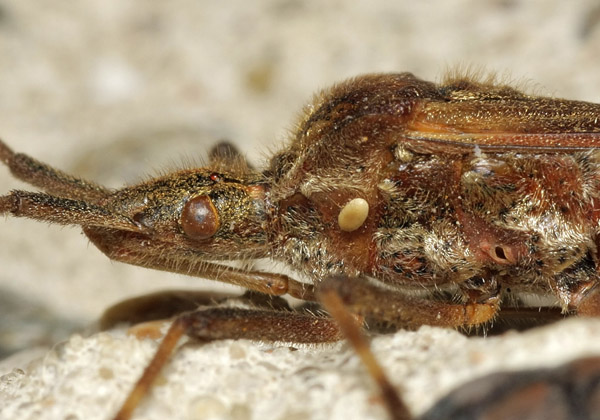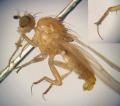Diptera.info :: Identification queries :: Diptera (eggs, larvae, pupae)
|
Tachinid eggs on Leptoglossus
|
|
| tristanba |
Posted on 18-10-2010 12:31
|
|
Member Location: UK Posts: 97 Joined: 29.05.07 |
I was recently sent a specimen of the coreid bug Leptoglossus occidentalis rom Cornwall and looking through my photos realise it has the egg of what is presumably a Tachinid fly attached to one side of the metapeluron. Since this is such a recent arrival, I was curious as to which species might be responsible - are there known Dipteran parasites of Leptoglossus on the continent? Many thanks Tristan tristanba attached the following image:  [96.4Kb] |
| ChrisR |
Posted on 18-10-2010 13:00
|
|
Super Administrator Location: Reading, England Posts: 7706 Joined: 12.07.04 |
In the US it would usually be Trichopoda but that's probably just the commonest bug parasitoid out there ... and it isn't British yet. My guess would be something like Subclytia rotundiventris but it could be anything without a piercing organ (so no Phasia sp.)  Do you still have the bug alive, to rear out the parasitoid? 
Edited by ChrisR on 18-10-2010 13:00 Manager of the UK Species Inventory in the Angela Marmont Centre for UK Biodiversity at the Natural History Museum, London. |
| tristanba |
Posted on 18-10-2010 13:37
|
|
Member Location: UK Posts: 97 Joined: 29.05.07 |
Thanks Chris, sadly I didn't notice the egg until after I'd set the specimen, otherwise I would have tried to rear it out. It's interesting as I don't think I have ever seen Coreids affected in this way. I do however often see eggs attached to specimens of Acanthosomatidae (particularly Birch and Parent Bug) which I am sure must be Subclytia. Cheers Tristan |
| ChrisR |
Posted on 18-10-2010 14:23
|
|
Super Administrator Location: Reading, England Posts: 7706 Joined: 12.07.04 |
I did a bit of Googling and there are similar photos (not as good of course!) of the same bug or related ones, around the world.  Pity it was found late but keep an eye open for them in future - records from bugs are quite rare 
Manager of the UK Species Inventory in the Angela Marmont Centre for UK Biodiversity at the Natural History Museum, London. |
| Jump to Forum: |













